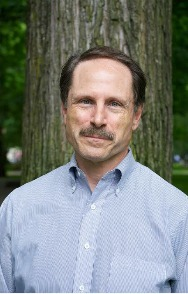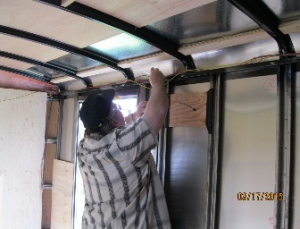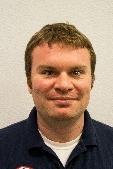 My fascination with the magic of electronics and physics began early. Some of my first memories are of sitting in a used refrigerator shipping box lined with camera flashbulbs. These were my spaceship’s indicator lights. Discarded wall switches and Romex completed the effect. Sometimes it was a spaceship propelled by antigravity; occasionally, it moved through time. They told me I had trouble with attention. I was so active, my desperate parents falsified my birth certificate to enroll me in kindergarten a year early. Who could blame them? Our house had about 200 square feet.
My fascination with the magic of electronics and physics began early. Some of my first memories are of sitting in a used refrigerator shipping box lined with camera flashbulbs. These were my spaceship’s indicator lights. Discarded wall switches and Romex completed the effect. Sometimes it was a spaceship propelled by antigravity; occasionally, it moved through time. They told me I had trouble with attention. I was so active, my desperate parents falsified my birth certificate to enroll me in kindergarten a year early. Who could blame them? Our house had about 200 square feet.
Self-reliance was part of growing up in Alaska. At 40 below, an ill-prepared and unlucky motorist could be dead from exposure in an hour. The 1964 Alaska earthquake hit when I was 13, and I remember five minutes of watching earth and buildings heave like ocean waves. Alaskans were not well prepared for the event, but they were so accustomed to helping each other out, living off the land, and making and repairing what they needed, that they managed remarkably well. I learned that with preparation, you never had to be uncomfortable, hungry, or afraid.
Ham radio operators were the heroes of the day, providing the only communication most Alaskans had with the outside world. To this day, Alaska provides free registration and vanity plates to licensed amateur radio operators as a gesture of gratitude for their service during the earthquake.
Neither of my parents had money nor went to college, but both of them put a high premium on saving and on formal education. I worked as an audio-visual technician for a small business that rented out movies and projectors around the state and then for the Anchorage Borough School District. I repaired television sets. I got my first ham radio license at 16, but didn’t do that much with it. I built all of my own Heathkits but didn’t have any guidance or test equipment, and I did not succeed in getting them to work properly. It was also around this time that I won a local competition and received a grant to travel through Europe with a dozen other teenagers, chaperoned by a local schoolteacher and an Alaska State Representative. The experience made a lasting impression.
For the two summers before attending Stanford to study mathematics, I was a technician in the Communications Division of the US Bureau of Land Management. I flew around Alaska servicing BLM equipment and running radio nets. I spent several weeks holding down a night shift, picking up weather reports from around the state. I made enough money to cover half of my Stanford room, board, and tuition.
While at Stanford, I studied physics under three Nobel laureates, and I survived all of this work by promising myself that when I graduated, I would indulge in my first “bucket list,” which included learning scuba diving, getting a private pilot’s license, and returning to Europe to study languages. My travels had taught me that knowing other languages was important.
After graduating, I followed a high school sweetheart to Portland and got my first job as a childcare worker. After a year I concluded that I was a better mathematician than I was a childcare worker and went to work for Portland General Electric in what became their Analytical Laboratory. I had a lot of fun at PGE, helping them build a precision measurement lab. I also worked as an environmental scientist, maintaining programmable field instruments for tracking air quality and metrology.
By the time I was 27, I had done skydiving and everything else on my bucket list except study languages. I sold everything and moved to Germany, where I enrolled in the language and culture program with the Goethe Institutes at Ulm, Baden-Württemberg, and then Boppard am Rhein in Germany. I spent another year with Alliance Francaise in Paris and L’Institute de Touraine in Tours.
When I got back to Portland in 1980, the lady I mentioned earlier introduced me to my future wife, Katie. I got hired by Portland General Electric again, this time in generation and financial planning. I moved to Phoenix, Arizona, in 1982, so that Katie could finish a Master’s in Industrial Engineering in Tucson. I worked at the Salt River Project for seven years in corporate and strategic planning, picking up an MBA along the way. Katie and I got married and our two boys arrived shortly thereafter. We moved back to Portland in 1989, and I put out a consulting shingle and started working on the Masters and PhD in mathematics at Portland State University. I got hired into Portland General Electric again in 1997 (when will they ever learn?), where I soon joined the Research and Development Group at Enron to do valuations and teach financial mathematics.
I put in about four years with both Enron’s and Portland General Electric’s power and natural gas trading floors and operations. (Oh, I have such stories…) In 1982, I was hired into the Northwest Power Planning Council, now the Northwest Power and Conservation Council, where I served in a nine-person team developing energy policy for the governors of the four Northwest states. Much of my work after finishing my PhD in 2000 has consisted of developing decision-support computer models. Among the tasks of this federal interstate agency is developing an electric power plant acquisition plan that is environmentally and economically consistent with existing generation in the Columbia River drainage basin. The Council’s Regional Planning Model (RPM) is my legacy, and it is currently being commercialized by Navigant Consultants, an international consulting service.
I retired in October 2012. I volunteer for our fellowship. I am also a Portland Bureau of Emergency Management Neighborhood Emergency Team (NET) team leader and a member of their citizen’s advisory Leadership Committee. I got my General amateur radio license in August 2012 and my Extra (AE7XP) that October. My radio interests are currently in antenna design and signal propagation. Katie recently launched her new career as a Unitarian Universalist minister. Katie and I want to do more travel and kayaking. My boys Scott and David are now men in their late 20s, and we are fortunate to have them and their girlfriends over for dinner from time to time. I’m hoping to pick up my French horn again after forty years and maybe even learn to sing. I want to start meditating regularly and to get back into shape. I think it would be fun to learn a couple more languages. I still have research interests in high-performance computing and certain areas of abstract mathematics. I have a dozen electronics books and projects sitting unfinished on my desk. Maybe I’ll finally get back to that anti- gravity drive. Glad I finally got that hyperactivity thing under control. Now, if I could just find my way out of this cardboard box.

 My fascination with the magic of electronics and physics began early. Some of my first memories are of sitting in a used refrigerator shipping box lined with camera flashbulbs. These were my spaceship’s indicator lights. Discarded wall switches and Romex completed the effect. Sometimes it was a spaceship propelled by antigravity; occasionally, it moved through time. They told me I had trouble with attention. I was so active, my desperate parents falsified my birth certificate to enroll me in kindergarten a year early. Who could blame them? Our house had about 200 square feet.
My fascination with the magic of electronics and physics began early. Some of my first memories are of sitting in a used refrigerator shipping box lined with camera flashbulbs. These were my spaceship’s indicator lights. Discarded wall switches and Romex completed the effect. Sometimes it was a spaceship propelled by antigravity; occasionally, it moved through time. They told me I had trouble with attention. I was so active, my desperate parents falsified my birth certificate to enroll me in kindergarten a year early. Who could blame them? Our house had about 200 square feet. A hearty congratulations to the trailer committee on their excellent and successful efforts thus far! I hope you all have heard from Adam KF7LJH that the trailer for the communications trailer project has been acquired, and we get to move on to the difficult work of fitting out our new resource. None too soon either, as the results from our February drill demonstrate the need for our command and control to be supported with a centralized operating hub. Anyone who can make themselves available to help is encouraged to contact the team at
A hearty congratulations to the trailer committee on their excellent and successful efforts thus far! I hope you all have heard from Adam KF7LJH that the trailer for the communications trailer project has been acquired, and we get to move on to the difficult work of fitting out our new resource. None too soon either, as the results from our February drill demonstrate the need for our command and control to be supported with a centralized operating hub. Anyone who can make themselves available to help is encouraged to contact the team at